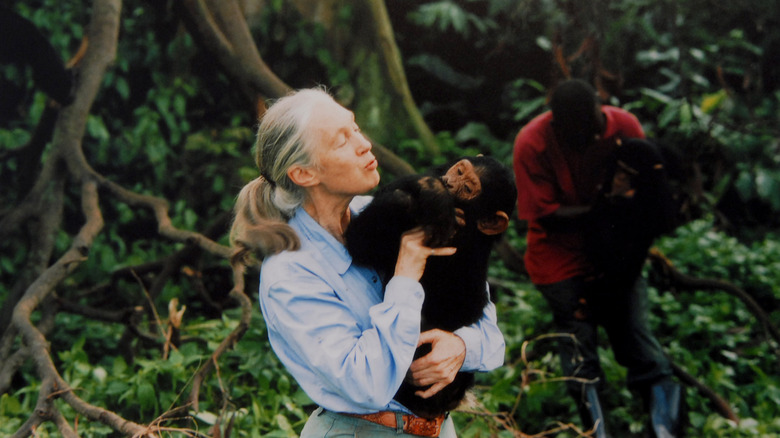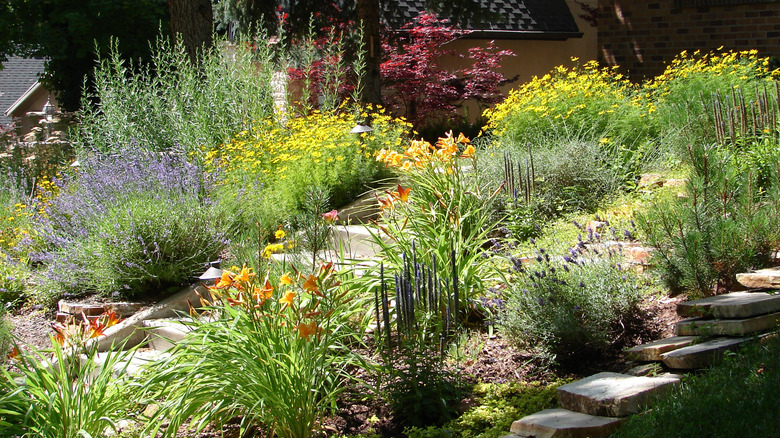Jane Goodall's Advice On How To Make An Environmental Difference In Your Own Backyard
The planet has recently lost one of its most effective advocates. Jane Goodall passed away from natural causes at age 91 while on a speaking tour. Given her extensive field research, it was impossible for Goodall to come away with only data — her countless hours spent in forests imbued her with a fierce environmentalism. Goodall tasked herself with sharing these views born of serious scholarship and astute observation, and she leaves us with a wealth of advice for how we can care for the planet, literally from our backyards. At the heart of Goodall's message is water conservation, planting suitable if not native species, and halting the use of noxious pesticides, herbicides, and overenthusiastic fertilizers.
"Cumulatively small decisions, choices, and actions make a very big difference," Goodall once shared. We can apply this musing to lots of aspects of life, but it's easiest to start at home with things we have control over. In her 2014 book "Seeds of Change," Goodall stated that for years, the standards for our yards have been beauty-driven with little concern for the consequences of how we make our yards beautiful. As a way to honor her memory while also making our green surroundings healthier for both nature and for us, Goodall urges us to shift from landscapes that hurt the environment to ones that do no harm or even benefit the ecosystem. The traditional green lawn doesn't need to be the gold standard of landscaping, nor do finicky non-native ornamentals. Even if the mention of "eco-friendly" gardening makes your eyes roll back into your head, many of these practices will also save you time, be more cost effective, and protect your health.
Yards and gardens as their own ecosystems
In "Seeds of Change," Goodall shared an anecdote that's a perfect example of how small tweaks can mean real change. After dismissing a landscaper who was using pesticides and herbicides at her property (unbeknownst to her), she discovered that soon after this unsavory practice had stopped, birds she hadn't seen for a while returned to feed on the pests that were formerly controlled with toxins. In an ideal situation, nature balances itself out like this, with pests meeting predators' needs, and that can happen more easily when you grow native plants. While it's no guarantee for a thriving garden, species that evolved in your region will come up against fewer challenges to grow successfully. Native plants are more resilient, flourish in local soil, and rely on less water. Even if you don't live in an arid region, climate change is bringing more drought to areas that aren't known for being dry, so creating a climate-resilient garden should help both the environment and your wallet.
However, choosing between native and non-native plants is harder than you think. Some non-native plants have existed in an environment long enough to have significant wildlife value and exist without too much human intervention, so don't write off non-natives entirely without looking into their needs.
Goodall gives lawns a particularly harsh beating in her book, as well. What many homeowners see as a necessity is a huge resource sink; water, harsh chemicals, and gas-powered tools all do their fair share to harm the earth. Rethink what's beautiful by replacing that sinkhole of resources with a pollinator-friendly lawn alternative, or by tilling it up in favor of an edible garden that gives back to both you and wildlife.

